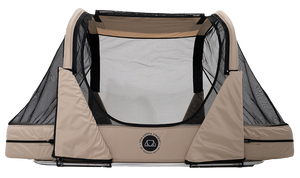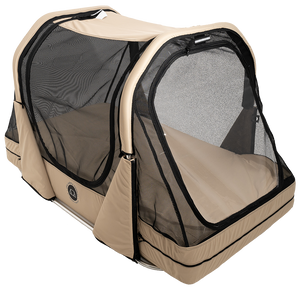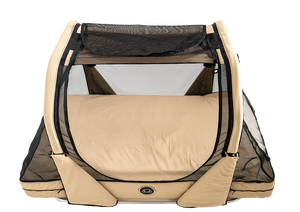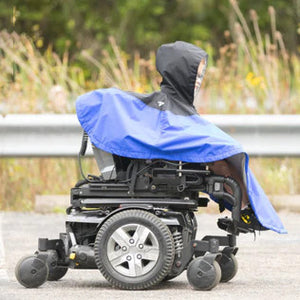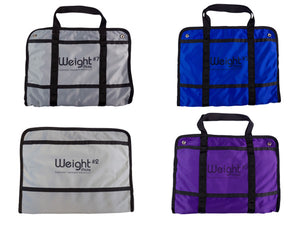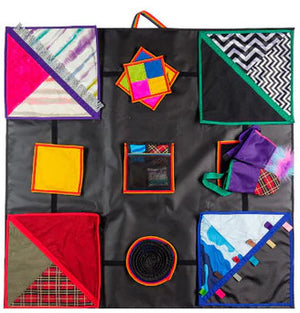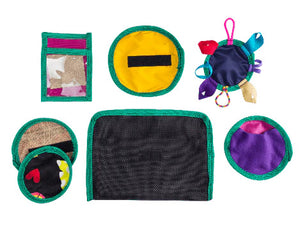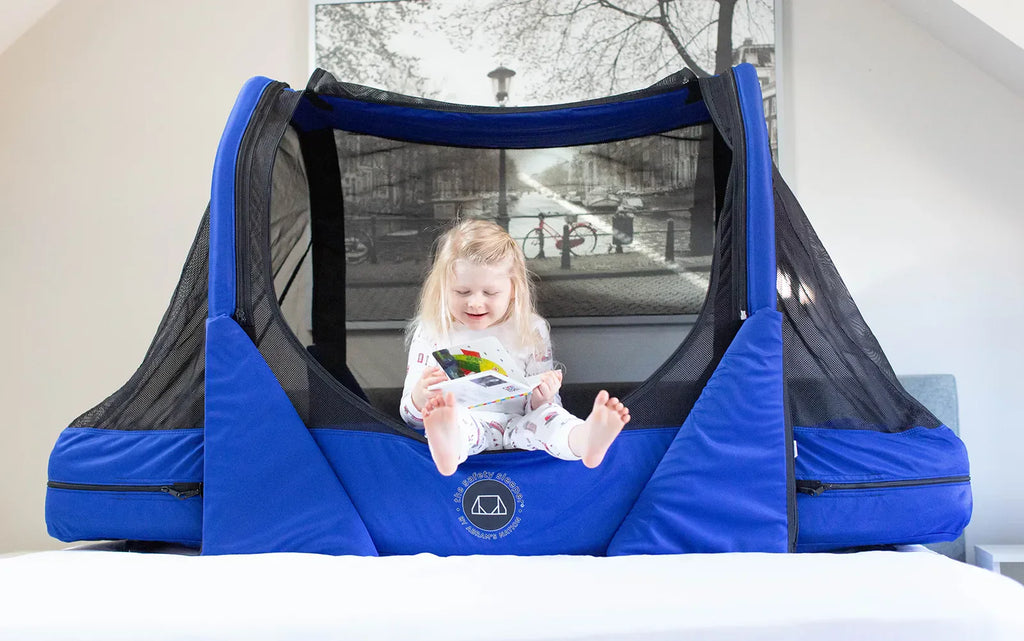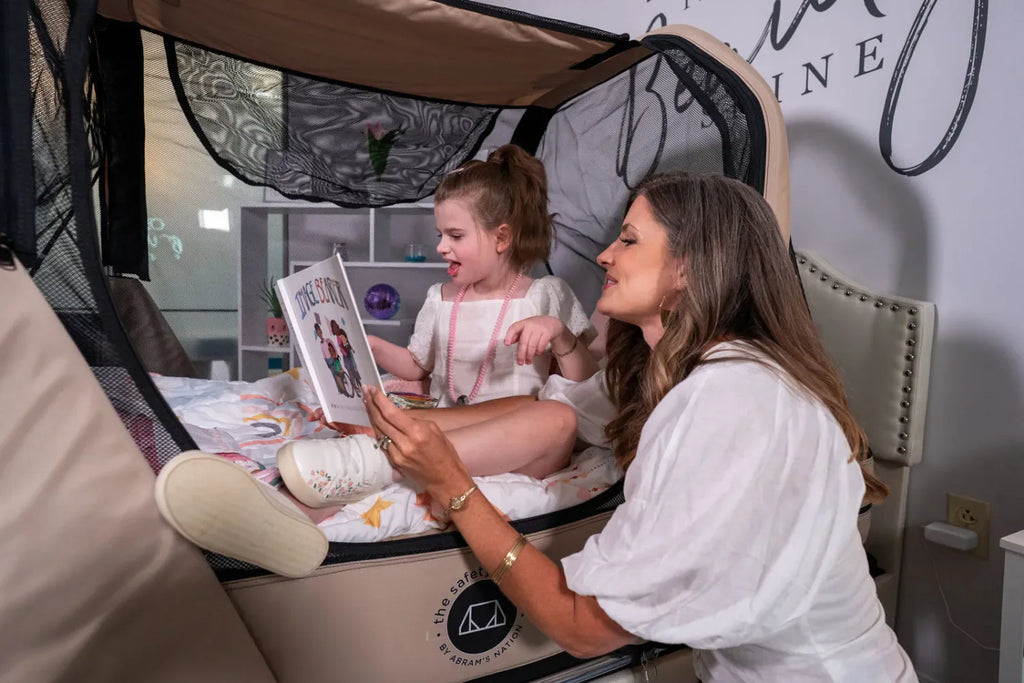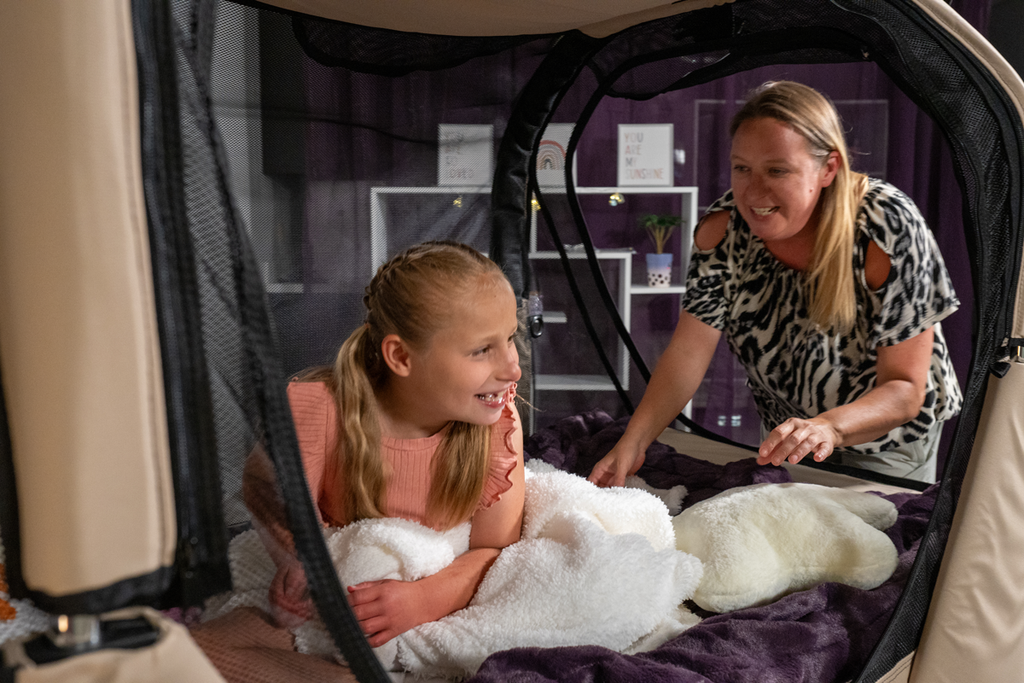If you're here, you've probably been told you need a Letter of Medical Necessity (LMN) to help get your child's safety bed covered by insurance. That might sound intimidating, but we’ve helped hundreds of families walk through this process — and we’ve been through it ourselves.
This guide was created by a team that understands what it means to fight for safe sleep and peace of mind. It's written for caregivers, parents, and grandparents who want clear answers from people who genuinely get it.
We’ll walk you through what an LMN for a safety bed is, who should write it, what it should say, and how to make the process a little more manageable (and hopefully a little less stressful).
Disclaimer: This guide is for informational purposes only and should not be considered medical, legal, or insurance advice. Always consult directly with your healthcare provider and insurance representative to determine the best course of action for your specific situation.
- What Is a Letter of Medical Necessity?
- Who Should Write the Letter of Medical Necessity For a Safety Bed?
- Getting Specialists Involved: An LMN Success Story:
- What to Include in a Letter Of Medical Necessity for a Safety Bed
- Helpful Tips for Caregivers Navigating The Insurance Process
- Next Steps for Getting The Safety Sleeper® Covered By Insurance
What Is a Letter of Medical Necessity?
A letter of medical necessity is simply a letter written by your child’s healthcare provider that explains why something like a safety bed isn’t just helpful but truly needed. LMNs are a necessary step in the process of getting a safety bed covered by insurance.
This documentation from your child’s healthcare providers helps advocate for your family by showing the insurance company what life looks like at home, what you’ve tried, what hasn’t worked, and how a safety bed like The Safety Sleeper® will actually help.
A strong LMN:
-
Describes your child’s specific safety risks (like wandering at night or risk of injury)
-
Outlines everything you’ve already tried to solve the issue (e.g., baby monitors, alarms, sleep aids)
-
Connects the dots between the problem and the solution
We’ve seen families get approvals and win appeals by making sure their letter told the full story, honestly, clearly, and with heart.
Who Should Write the Letter of Medical Necessity For a Safety Bed?
Typically, a Primary Care Physician (PCP) or Occupational Therapist (OT) writes the LMN. These professionals usually know your child’s care plan and daily challenges. While your provider writes the letter, you can play a big part in guiding what gets included.
Getting Specialists Involved: An LMN Success Story:
One social worker shared how involving a specialist made all the difference for a child in her care:
“I came across The Safety Sleeper® and knew it would be the answer to Anthony’s mother’s prayers. I was fortunate to get the bed paid for by NJ Medicaid. I did a lot of calling to the insurance and was very persistent with trying to get Medicaid to pay. I had the neurologist write a letter to the insurance company, telling them about his seizures and developmental delay. With much perseverance, advocacy and determination, the insurance company approved the bed.”
Stories like this are a reminder: the right letter from the right provider can move things forward, and you're not alone in figuring it out.
What to Include in a Letter Of Medical Necessity for a Safety Bed
LMNs are really about helping your provider tell your family's story in a clear, organized way that speaks the insurance company’s language.
We gently encourage keeping the letter grounded in facts. We know this journey is incredibly personal, but the letter your provider writes should focus on safety, history, and medical need. That’s what insurance reviewers are trained to look for, and it’s what will give your request the strongest chance.
Below, we’ve compiled a simple breakdown of what a letter of medical necessity should include. Sharing this guidance with your provider ensures they include the right information in your LMN to build a strong case.
1. Functional History
This section sets the foundation. It gives the reviewer a snapshot of your child’s physical, sensory, and cognitive needs. Additionally, establishing your child’s functional history helps insurers understand the specific risks that exist and why standard beds may not provide a safe environment.
Here’s what you should include:
-
Describe overall abilities: Can they move independently, or do they need assistance? Do they have coordination issues that affect balance or increase fall risk?
-
Communication and comprehension: Do they respond to verbal prompts? Can they understand danger or safety cues?
-
Sensory or behavioral challenges: Is their sleep disrupted by overstimulation, restlessness, or confusion at night?
2. Specific Safety Concerns
This is where real-life situations help underscore urgency and need.
-
Document past incidents: Has your child gotten out of bed and wandered at night? Left the house? Turned on appliances? Fallen from a standard bed?
-
Ability to recognize danger: Include whether they understand potential harm (e.g., opening doors, going outside unsupervised).
These events help insurers understand the real safety stakes. Be specific, as facts and examples carry weight.
3. What Has Already Been Tried
Insurance reviewers often look for a progression of effort: Have you tried safer, cheaper, or more common solutions?
-
List previous strategies: Document what you’ve already tried, such as baby monitors, video cameras, door alarms, locking doors, sleep aids, behavioral therapy, or floor beds.
-
Include outcomes: Did the child defeat safety tools (e.g., opening knobs, climbing over rails)? Did sleep medication fail to prevent waking or wandering?
Going into detail shows that the family has made sincere efforts and that a safety bed isn’t a first or casual solution but a carefully considered necessity.
4. How This Impacts Daily Life
This part connects nighttime safety with daytime well-being for both the child and the caregiver:
-
For your child: Is sleep deprivation affecting their learning, therapy participation, or mood? Are they exhausted, unfocused, or more likely to have behavioral episodes?
-
For your family: Are caregivers taking shifts to stay awake? Missing work? Experiencing burnout? Has it affected other children in the household?
The impact on daily life helps justify that this isn’t just a comfort issue. It’s interfering with health, development, and family functioning.
5. Why a Safety Bed Is the Right Fit
This is where the LMN ties together all the previous points and explains why this specific piece of equipment is medically necessary.
-
Link safety bed features to needs: Does your child need an enclosed bed to keep them safe at night? Would a convertible entry compatible with a patient lift make transfers easier? Would a waterproof coverlet sheet help manage nighttime incontinence? Does the ability to travel with the bed support continuity of care?
-
Clarify intent: This bed is not about restriction. It’s about creating a safe and calming sleep environment that allows your child to rest peacefully.
This shows that the solution is both thoughtful and medically sound. You’re not just asking for a product, you’re demonstrating that it’s the only remaining safe option.
Still running into obstacles? You're not out of options. Many families turn to their communities for help. If you're considering that route, check out our guide on how to fundraise when a safety bed isn’t covered by insurance.
Helpful Tips for Caregivers Navigating The Insurance Process
This process is hard. It's paperwork, phone calls, and emotional storytelling on top of an already full plate. These small actions can make the journey more manageable:
-
Keep a detailed journal or log: Note down safety incidents, sleep interruptions, or anything you feel a provider or insurer should know. Dates, times, and outcomes go a long way in building a strong case.
-
Stay organized: Use a binder or digital folder to keep everything in one place, including LMNs, emails, DME paperwork, appeal letters, and support resources. This will reduce stress when you need to follow up or submit additional information.
-
Don’t be afraid to follow up: If a provider hasn’t submitted the letter or if your DME hasn’t confirmed next steps, it’s okay to check in. Your persistence isn’t bothersome. It’s advocacy for your child.
-
Ask questions and ask again: If something feels unclear or overwhelming, ask for clarification. Whether it's a medical provider, insurance rep, or our team, we’re here to help you get answers.
-
Give yourself credit: Every step you take, including every phone call, note, or form, is a powerful act of love. You are not alone in this process, and your determination is making a real impact.
If you’re feeling overwhelmed by the process, you’re not alone. Read how Anthony and Autumn fought for their The Safety Sleeper® and won.
Next Steps for Getting The Safety Sleeper® Covered By Insurance
While this guide walks through how letters of medical necessity for safety beds work in general, it’s not a step-by-step for getting The Safety Sleeper® specifically covered through insurance. That process can vary depending on your provider, insurance, and state. However, you don’t have to navigate it alone.
If you're preparing an LMN for The Safety Sleeper®, or just trying to figure out where to begin, we’re here to make the next step easier. Whether it’s understanding insurance requirements, getting connected with a provider, or comparing bed features, we’re here to help.
Don’t navigate this process alone. Reach out today!

